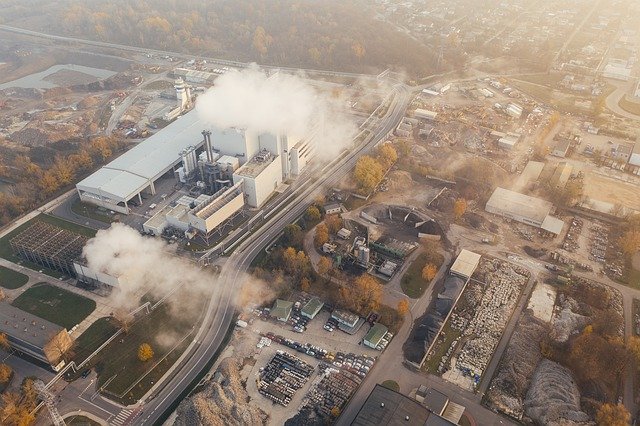The sources responsible for air pollution are also responsible for greenhouse gas emissions which is why limiting our greenhouse gas emissions is a great strategy to tackle the urgent climate crisis. Given the relentless pandemic the world has just endured, health-first, people-first, and planet-first policies are the need of the hour.
The primary sources of greenhouse gases are the burning of fossil fuels (coal, natural gas, gasoline, oil). This directly increases atmospheric carbon dioxide, which ultimately traps damaging levels of heat.
The construction industry hugely and negatively impacts the environment through problematic activities such as transportation, mining, combining of chemical products, manufacturing, soil extraction and whatnot.
Here Thecotocongroup shares seven ways to reduce your carbon footprint by reducing greenhouse gas emissions:-
1. It’s all about the materials utilized
Materiality essentially revolves around the extraction, production and transportation of the materials as they contribute immensely to emissions. The steel industry alone is known to contribute up to 30-40% of the carbon emissions as far as the industrial sector is concerned, whereas cement accounts for approximately 19-20%. Manufacturers and environmental engineers have been attempting to mitigate the effects of the same through natural materials.
Natural materials (natural stones and various types of wood) usually need a very low production process, however, the transportation to the construction site always proves to be a big hassle. It’s also advised to limit carbon-intensive materials such as aluminum, plastics, and various foam insulations.
To be able to perform carbon sequestration, which is yet another great way of tackling the issue at hand, the materials used must be sequestration friendly. The agricultural products that enable sequestration to leave a huge impact on the embodied carbon. Therefore, consider wood, straw or even hemp.
2. Regeneration and renewables!
See if your project allows for its electricity to be generated via renewables. Renewables include solar energy, hydropower generation, waste and biomass energy, and tidal or ocean energy. Renewables make for a brilliant alternative because unlike fossil fuels, the main source of greenhouse gas emissions.
3. HVAC
HVAC makes for the lowest hanging fruit. It is responsible for around 40% of the carbon emissions. Thus, if efficiency is somehow incorporated into the heating, ventilating and air-conditioning systems then a substantial reduction in carbon footprint is guaranteed. The following are advised:-
– schedule pre-determined HVAC operations
– take care of outdoor ventilation, it’s usually ignored but is just as important
– do install sensors to save on power, plus smart tech is truly the future
– install a low energy humidifier
4. Update your lighting
The usage of optimised lighting is non-negotiable, especially given the convenience. Lighting is known to account for approximately 40% of the building’s total energy used. As mentioned before, consider renewables like solar panels which will surely help you reduce your carbon footprint and greenhouse gas emissions.
The most obvious way is to switch to LEDs and most LED projects are executed with the sole aim of saving on electricity. However, LED lights also bring in several safety benefits, which is why most audits will suggest switching up the lighting.
1. They have a lower power consumption because of which they emit less heat. This implies that there are lesser chances of it starting a fire.
2. As opposed to other conventional lamps that require glass in their respective designs, LED lighting has no such prerequisites and can be modeled utilizing much safer products. This also makes them shatterproof.
3. Owing to their low consumption, LED lighting also runs successfully on a power back, for a very long time. This is nothing short of a life-saving hack for during those blackouts!
5. Check your water usage
It’s imperative to look into how your water is being used, supplied and treated – if at all it is. Devise smart water strategies that revolve around water conservation whilst also being cost-effective. You can start by looking into rainwater harvesting and ensuring your plumbing structure is sound. Moreover, these days high efficiency toilets help reduce water volume while bathroom operations like showering or flushing also lower GHG emissions.
6. Recycle! Recycle! Recycle!
Choose the recyclable building content and material that will have a lesser negative effect on the environment. Also, embrace green practices like employing or sourcing from green vendors. Recycled steel, for example, reduces mining waste by a staggering 97 per cent!
7. Understand how your building location affects this
Highly efficient buildings must have an orientation along an east-west axis while maximizing north and south-facing glazing.







Recent Comments